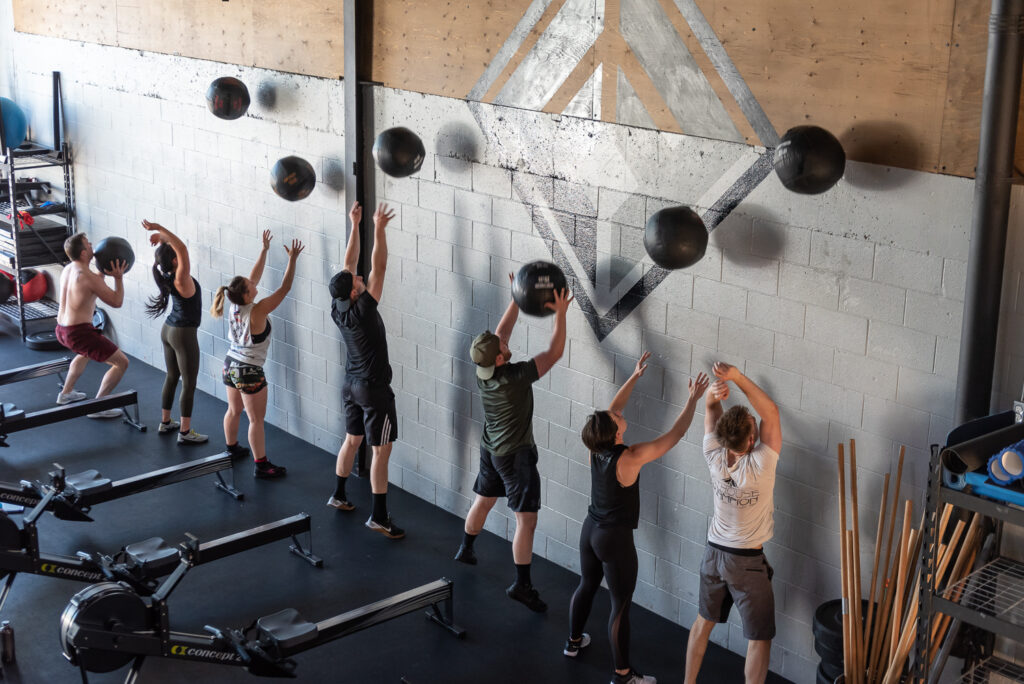HIIT, or high-intensity interval training, is a type of exercise that has gained popularity in recent years due to its time-efficient nature and numerous health benefits. HIIT involves alternating between periods of high-intensity exercise and recovery periods and can be done with a variety of exercises such as running, cycling, and weightlifting. In this article, we will explore what HIIT is exactly, how it works, and the benefits it can provide.
How does HIIT work?
HIIT involves short bursts of high-intensity exercise followed by periods of recovery. The high-intensity component is usually performed at a near-maximum effort level, while the recovery periods allow for a decrease in intensity before the next high-intensity segment.
The high-intensity component:
During the high-intensity component, the body uses a significant amount of energy, leading to an increase in heart rate and breathing rate. This results in the body burning more calories and fat compared to steady-state cardio.
The recovery component:
The recovery periods allow the body to rest and replenish energy stores, making it possible to perform at a high-intensity level during the next segment. This also allows the body to recover faster, reducing the risk of injury and fatigue.
The science behind HIIT:
Studies have shown that HIIT can increase the body’s metabolism, leading to greater fat-burning even after the workout is completed. HIIT has also been shown to improve cardiovascular health by increasing VO2 max, the maximum amount of oxygen the body can utilize during exercise.

Benefits of HIIT
Fat loss and weight management:
HIIT has been shown to be an effective way to burn fat and lose weight due to the increased energy expenditure during the workout and the post-workout calorie burn. HIIT has also been shown to be effective in reducing abdominal fat, which is associated with an increased risk of chronic diseases.
Increased cardiovascular health:
HIIT has been shown to increase VO2 max, which is a measure of cardiovascular fitness. HIIT can also lead to a reduction in blood pressure and resting heart rate, which are both risk factors for heart disease.
Improved metabolism:
HIIT can increase the metabolism, leading to increased calorie burn even when the body is at rest. This is because HIIT can increase the amount of lean muscle mass, which requires more energy to maintain compared to fat.
Reduced risk of chronic diseases:
HIIT has been shown to improve insulin sensitivity and glucose control, reducing the risk of type 2 diabetes. HIIT has also been shown to improve cholesterol levels and reduce inflammation, both of which are risk factors for heart disease.
Time-efficient workout:
One of the biggest benefits of HIIT is its time efficiency. HIIT workouts can be completed in as little as 10-20 minutes, making it easier to fit into a busy schedule compared to longer, steady-state cardio workouts.
How to do HIIT
Different types of exercises:
HIIT can be done with a variety of exercises, such as running, cycling, bodyweight exercises, and weightlifting. The key is to perform the exercises at a high intensity for a short period of time, followed by a period of recovery.
Duration and frequency of HIIT:
The duration and frequency of HIIT workouts will depend on the individual’s fitness level and goals. A beginner may start with shorter workouts, such as 10-20 seconds of high-intensity exercise followed by 30-40 seconds of recovery, while an advanced athlete may perform longer segments. It is generally recommended to start with 1-2 HIIT workouts per week and gradually increase the frequency as fitness improves.
Safety precautions:
As with any form of exercise, it is important to warm up properly before starting a HIIT workout and to cool down afterward. It is also important to listen to your body and adjust the intensity and duration of the workout as needed. Those with pre-existing medical conditions or injuries should consult with a healthcare professional before starting a HIIT workout.

Who can do HIIT?
HIIT for beginners:
HIIT can be modified to accommodate beginners by starting with shorter intervals and longer recovery periods. It is also important to focus on proper form and technique to reduce the risk of injury.
HIIT for athletes:
HIIT can be a beneficial workout for athletes looking to improve their performance. By incorporating sport-specific exercises into the HIIT workout, athletes can improve their endurance, speed, and agility.
HIIT for seniors:
HIIT can be adapted for seniors by reducing the intensity and duration of the workout and incorporating low-impact exercises. It is important to consult with a healthcare professional before starting a HIIT workout.
HIIT for pregnant women:
Pregnant women can still do HIIT workouts with modifications, such as reducing the intensity and avoiding exercises that put pressure on the abdominal area. It is important to consult with a healthcare professional before starting a HIIT workout during pregnancy.
HIIT vs. steady-state cardio
Steady-state cardio:
Steady-state cardio involves exercising at a moderate intensity for an extended period of time, such as jogging or cycling at a steady pace for 30-60 minutes.
Comparison of HIIT and steady-state cardio:
HIIT and steady-state cardio both have their benefits, but HIIT has been shown to provide greater fat loss and cardiovascular benefits in a shorter amount of time compared to steady-state cardio.
Pros and cons of each:
The pros of steady-state cardio include its lower intensity, making it a good option for beginners or those with joint issues. However, steady-state cardio can be time-consuming and may not provide the same fat-loss benefits as HIIT. The pros of HIIT include its time efficiency and greater fat loss and cardiovascular benefits, but it may not be suitable for those with certain medical conditions or injuries. Additionally, the high intensity of HIIT may not be sustainable for everyone, and it may take time to build up the endurance needed for longer HIIT workouts.
Conclusion
High-Intensity Interval Training (HIIT) is a type of exercise that involves short bursts of high-intensity exercise followed by periods of recovery. HIIT has become increasingly popular in recent years due to its numerous benefits, including increased fat loss, improved cardiovascular health, increased muscle mass, and reduced risk of chronic diseases. HIIT workouts can be done with a variety of exercises and can be modified to accommodate individuals of different fitness levels and goals. While both HIIT and steady-state cardio have their benefits, HIIT has been shown to provide greater fat loss and cardiovascular benefits in a shorter amount of time. As with any form of exercise, it is important to warm up properly, listen to your body, and consult with a healthcare professional before starting a HIIT workout.
FAQs
Is HIIT good for weight loss?
Yes, HIIT has been shown to be effective for weight loss due to its ability to increase metabolism and promote fat loss.
How often should I do HIIT workouts?
The frequency of HIIT workouts will depend on your fitness level and goals, but it is generally recommended to start with 1-2 HIIT workouts per week and gradually increase the frequency as fitness improves.
Can anyone do HIIT workouts?
HIIT can be modified to accommodate individuals of different fitness levels and goals, but it is important to consult with a healthcare professional before starting a HIIT workout, especially if you have pre-existing medical conditions or injuries.
How long should a HIIT workout be?
The duration of a HIIT workout will depend on your fitness level and goals, but it can be done in as little as 10-20 minutes.
Can I do HIIT workouts at home?
Yes, HIIT workouts can be done at home with little to no equipment. There are many online resources available for HIIT workouts that can be done at home.
References
- Gibala MJ, Little JP, Macdonald MJ, Hawley JA. Physiological adaptations to low-volume, high-intensity interval training in health and disease. J Physiol. 2012;590(5):1077-1084. doi: 10.1113/jphysiol.2011.224725.
- Laursen PB, Jenkins DG. The Scientific Basis for High-Intensity Interval Training: Optimising Training Adaptations and Performance. Sports Med. 2002;32(1):53-73. doi: 10.2165/00007256-200232010-00003.
- Weston KS, Wisløff U, Coombes JS. High-intensity interval training in patients with lifestyle-induced cardiometabolic disease: a systematic review and meta-analysis. Br J Sports Med. 2014;48(16):1227-1234. doi: 10.1136/bjsports-2013-092576.
- Ramos JS, Dalleck LC, Tjonna AE, et al. The impact of high-intensity interval training versus moderate-intensity continuous training on vascular function: a systematic review and meta-analysis. Sports Med. 2015;45(5):679-692. doi: 10.1007/s40279-015-0321-z.
- Keating SE, Johnson NA, Mielke GI, Coombes JS. A systematic review and meta-analysis of interval training versus moderate-intensity continuous training on body adiposity. Obes Rev. 2017;18(8):943

